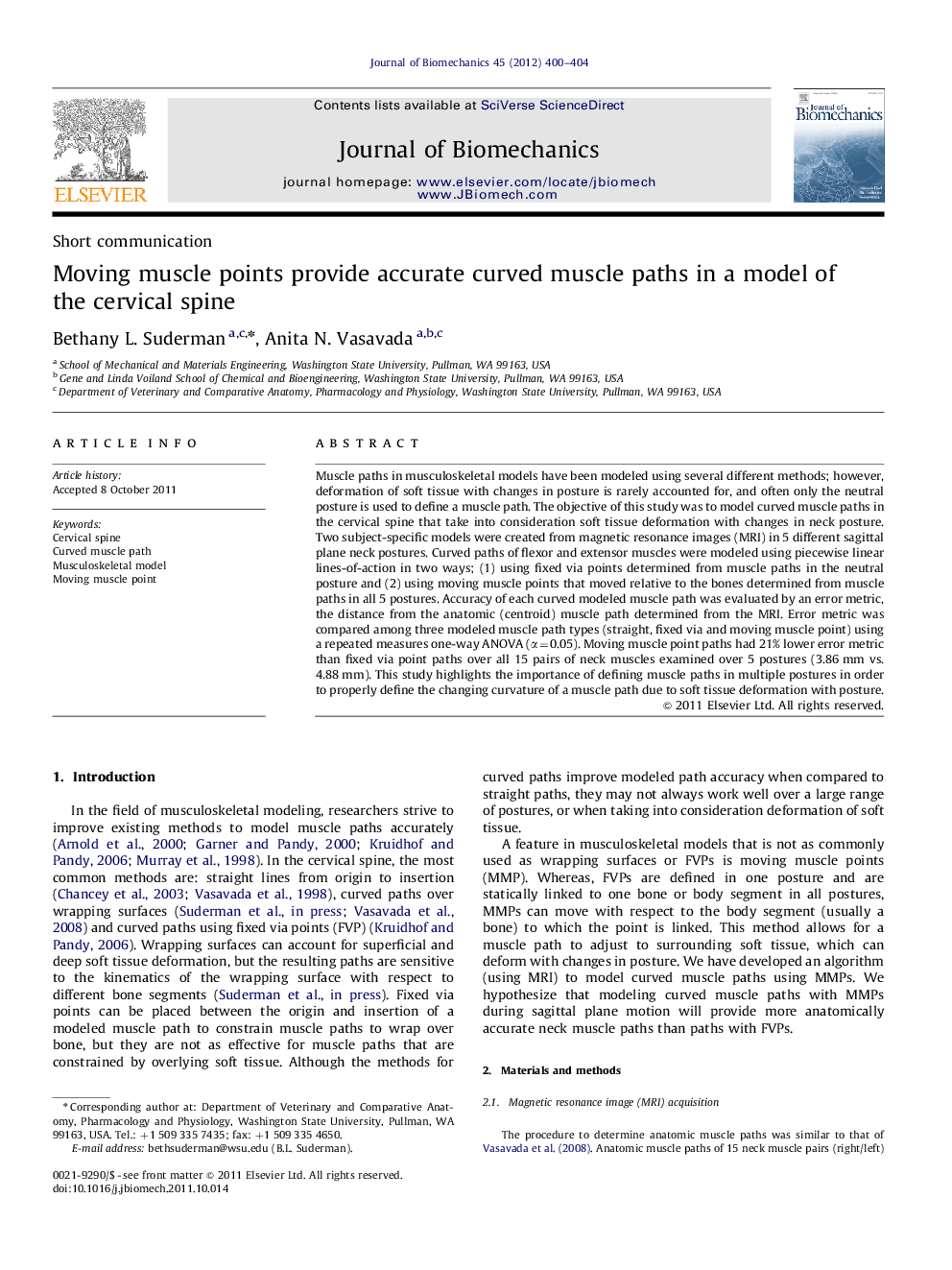| Article ID | Journal | Published Year | Pages | File Type |
|---|---|---|---|---|
| 10432739 | Journal of Biomechanics | 2012 | 5 Pages |
Abstract
Muscle paths in musculoskeletal models have been modeled using several different methods; however, deformation of soft tissue with changes in posture is rarely accounted for, and often only the neutral posture is used to define a muscle path. The objective of this study was to model curved muscle paths in the cervical spine that take into consideration soft tissue deformation with changes in neck posture. Two subject-specific models were created from magnetic resonance images (MRI) in 5 different sagittal plane neck postures. Curved paths of flexor and extensor muscles were modeled using piecewise linear lines-of-action in two ways; (1) using fixed via points determined from muscle paths in the neutral posture and (2) using moving muscle points that moved relative to the bones determined from muscle paths in all 5 postures. Accuracy of each curved modeled muscle path was evaluated by an error metric, the distance from the anatomic (centroid) muscle path determined from the MRI. Error metric was compared among three modeled muscle path types (straight, fixed via and moving muscle point) using a repeated measures one-way ANOVA (α=0.05). Moving muscle point paths had 21% lower error metric than fixed via point paths over all 15 pairs of neck muscles examined over 5 postures (3.86 mm vs. 4.88 mm). This study highlights the importance of defining muscle paths in multiple postures in order to properly define the changing curvature of a muscle path due to soft tissue deformation with posture.
Keywords
Related Topics
Physical Sciences and Engineering
Engineering
Biomedical Engineering
Authors
Bethany L. Suderman, Anita N. Vasavada,
